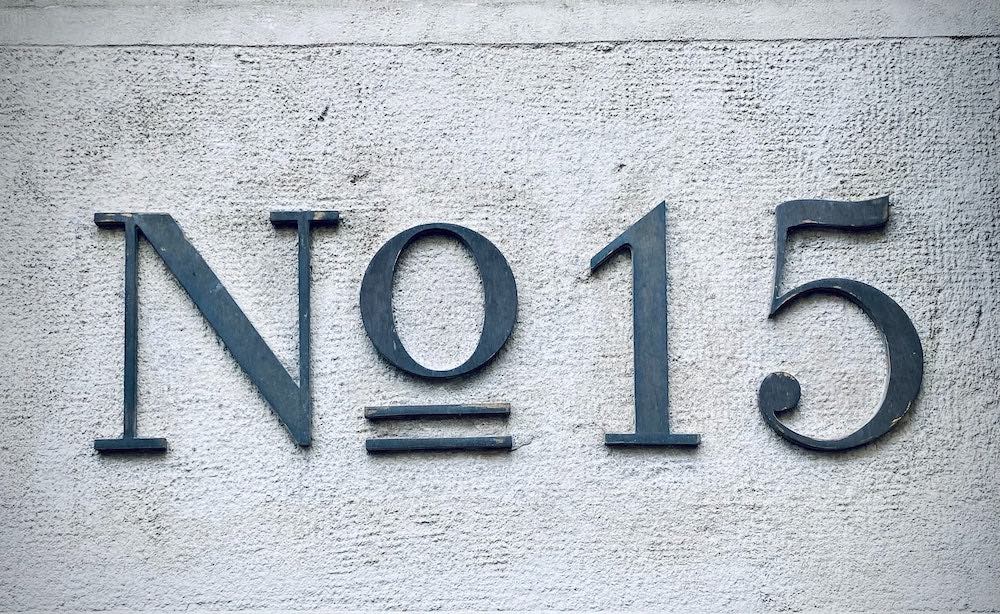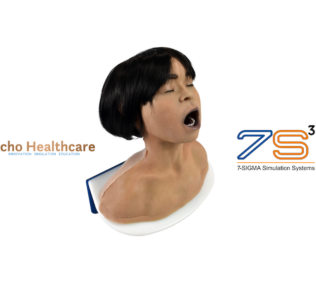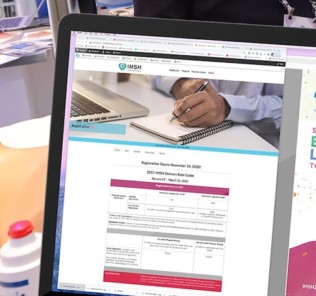15 Must Know Healthcare Simulation Terms For 2020
Previously on our series of exploring key terms relevant to Clinical Simulation, we shared about important industry terms like SESAM, Simulation in Nursing Education, 3B Scientific, Harvey and more! Today we take a look at 15 more Medical Simulation words or phrases you may not yet know — but should! From unique simulation technologies to lead non-profit organizations, and from key industry vendors to regional spellings — these are part of the “must-know” knowledge for those accelerating their careers in healthcare simulation. Review the list for yourself before sending to newer simulation champions to help get them caught up to speed! Additional key term articles are listed below.
Simulation Recording System: A Simulation Recording System is an audio visual performance analysis system which is used to showcase medical simulation activities during a training module or scenario. These systems are designed so that both the participants in the simulated learning activity and learners not taking part in the scenario can be debriefed on successful actions and potential errors after each module is completed. Simulation Recording Systems operate through a series of cameras and microphones connected to a healthcare simulation debriefing system that allow instructors to create annotations during each learner’s training activities. Software features make real-time annotation playbacks possible, which helps guide learners and provide them with a sense of what they look like throughout the course of a simulation scenario.
Simulated Medications: Simulation Medications are practice meds designed to provide realistic clinical simulation practice. Using and interacting with simulated medications helps to prepare learners for what they may encounter in real patient scenarios. This includes being able to decipher and understand the packaging and labeling elements of pharmaceuticals and alternative medications. Healthcare Simulation, aka Medical Simulation, allows healthcare students and working professionals to educate and train in safe environments without risking medical error patient safety issues. Increasing readiness to practice in the field, Simulated Medications prepare learners during healthcare simulations for the actual packaging and labeling of real ampules, patches, oral medications, vials and more. Additionally, Simulated Medications can come in a variety of forms to help provide instruction on position-specific treatments.
Sponsored Content:
Simulation Manikins: A Simulated Manikin is a trainer for product that provides a means by which learners and educators can practice their healthcare skills in real-time before attempting to assess or perform a treatment on a patient first-hand. While standardized (or “sample”) patients have been used across medical training since the mid-twentieth century, improving technologies have led to a number of advanced ways that digital patient simulation models can be represented through manikins. That being said, Simulation Manikins in healthcare simulation are used today for the purpose of advancing clinical skills through learning and assessment. This usage has demonstrated that advanced and expanded opportunities within healthcare learning can lead to ever-increasing safety measures. These simulated opportunities further create the opportunity for these learners and residents to develop and practice their skills beyond what is typically retained through a standard textbook education.
Nursing Mannequin: A Nursing Mannequin, more commonly referred to as a Nursing Manikin, is a lifelike patient simulator used to represent real-world nursing scenarios. The purpose of a Nursing Mannequin is to provide learners and trainees with the ability to extend their knowledge by experiencing some potential nursing scenarios in nursing simulation training or educational settings, prior to on a real-life patients. Such clinical simulation enables learners to be better prepared for a variety of patient care scenarios they will encounter at work.
Cardiac Simulator: A Cardiac Simulator is an electrocardiogram (ECG) simulation tool that works to simulate an ECG for cardiac rhythms. Typically offered in the form of a software program or website, a Cardiac Simulator can be used by learners to begin to trace ECGs and subsequently record the electric pulse of the heart. Mimicking patient vital signs, this simulation tool can also be used to train on how to check for a variety of different heart conditions and problems. Usually these devices can be used with a manikin or other medical simulator to practice operating defibrillators or pacers through adapters enabling for real time ECG rhythms during clinical simulation exercises.
Simulation Australasia: Simulation Australasia (SimAust), previously known as Simulation Australia and which overseas the Australian Society for Simulation in Healthcare (ASSH), is a non-profit organization management body for simulation that provides a forum for those involved in simulation across Australasia. Founded in 1999, the forum was created to allow for the discussion and distribution of information, and to advance the research, development and use of simulation technologies.
Sponsored Content:
SimGHOSTS: SimGHOSTS, also known as the The Gathering Of Healthcare Simulation Technology Specialists, is an international United States-based non-profit organization. The organization is dedicated to supporting individuals and institutions operating medical simulation technology and spaces through hands-on training events, online resources and professional development. As of 2019, over 2,000 simulation champions attended events all over the world. In addition to the annual event, SimGHOSTS also provides insight and information on a daily basis through the organization website. There are currently over 3,000 online subscribers to the website gaining access to courses, books, forum discussion boards and more!
ASPiH: The Association for Simulated Practice in Healthcare, is a UK-based non-profit membership organization formed in 2010 that is made up of professionals from the fields of healthcare, education and patient safety. These members include researchers, learning technologists, workforce development managers, education managers, administrators and healthcare staff and students. Members of the ASPiH tend to have a genuine interest in both new and innovative methods of learning, and wish to optimize the use of available clinical simulation resources across their work.
ASPE: Yep, it’s different from ASPiH! The Association of Standardized Patient Educators (ASPE) is a global organization focused on human simulation via Standardized Patients, aka Simulated Patients. Headquartered in Altamonte Springs, Fla., the organization serves as a virtual community for connection to the field of medical simulation. Designed with member convenience in mind, ASPE is responsive and easily accessible from a computer, phone or personal device. All things Standardized Patient here!
Body Interact: Body Interact is a cutting-edge medical simulation tool created by the company Take the Wind (TTW) for medicine and nursing, which uses virtual patients for problem-solving and clinical reasoning. The tool also allows for the creation of custom-made scenarios perfect for healthcare simulation programs looking to provide safe, affordable, and repetitive virtual patient engagements. Overall, the feedback provided by Body Interact is the way a learner will continuously improve their understanding and is key to their success. The timeline report provides a detailed sequence of actions taken during the clinical simulation. By checking their own performance metrics in accordance to the well-established guidelines, learners will determine ways to better themselves and strengthen their ability to perform in a healthcare scenario.
Center for Medical Simulation: The Center for Medical Simulation (CMS) is Harvard’s healthcare simulation training facility that focuses on instructing a broad spectrum of learners and providers. Since the center first opened in 1993, CMS has focused on developing teamwork behaviors and communication, collaboration and crisis management skills, all taught through realistic learning scenarios. Hands-on simulation in healthcare is used to help professionals develop a level of preparedness and insight that cannot be acquired through textbooks or lecture-based learning alone. In addition to this methodology, the Center for Medical Simulation’s vision includes establishing “experiential healthcare learning that never puts a patient at risk.” One of the world’s first clinical simulation centers, the mission of CMS is to ultimately use simulation to improve safety, quality and education in healthcare.
Anatomage: Anatomage is among the market leaders in medical simulation virtualization technology. For more than a decade Anatomage has been developing advanced 3-D anatomy products rendering hardware and software for both healthcare simulation in education and professional application. Headquartered in San Jose, Calif., the company offers technology that enables users to experience the most accurate anatomy visualization and dissection.
7-Sigma: The company 7-SIGMA (7S³) is a designer, manufacturer and supplier of high-performance polymer and metal components and assemblies for the printing, medical, aerospace, and industrial markets. More recently they have focused on a number of unique healthcare simulation task trainer models! Headquartered in Minneapolis, Minnesota, the company collaborates with educators and healthcare professions, while leveraging more than forty years of experience in material selection and precision manufacturing, to produce high-fidelity products. While continuously evolving and looking for ways to innovate these products, 7-SIGMA has been able to establish a premier training platform for airway management.
BT Inc.: BT Inc. is a Korean company that develops medical simulation devices which are similar to the human body for various practice and evaluation purposes. The company is currently planning, developing and manufacturing various medical simulators and models. According to the BT Inc. website, the company’s desire is to “always do the best to create a better tomorrow” in the field of healthcare simulation.
Additional Simulation in Healthcare Key Term Articles:
7 More Must Know Clinical Simulation Key Terms
12 More ‘Must-Know’ Healthcare Simulation Key Terms
11 More Key Terms to Help Your Healthcare Simulation Program Develop Faster
11 Key Terms to Help Colleagues Learn About Healthcare Simulation
HAPPY NEW YEARS!
Lance Baily, BA, EMT-B, is the Founder & CEO of HealthySimulation.com, which he started while serving as the Director of the Nevada System of Higher Education’s Clinical Simulation Center of Las Vegas back in 2010. Lance is also the Founder and acting Advisor to the Board of SimGHOSTS.org, the world’s only non-profit organization dedicated to supporting professionals operating healthcare simulation technologies. His co-edited Book: “Comprehensive Healthcare Simulation: Operations, Technology, and Innovative Practice” is cited as a key source for professional certification in the industry. Lance’s background also includes serving as a Simulation Technology Specialist for the LA Community College District, EMS fire fighting, Hollywood movie production, rescue diving, and global travel. He and his wife Abigail Baily, PhD live in Las Vegas, Nevada with their two amazing daughters.
Sponsored Content:

















